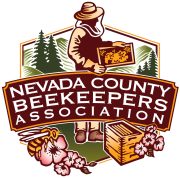Getting Started
Steps to becoming a successful Beekeeper
Keeping bees can be a fascinating hobby with many benefits to you, your community, the planet, and the bees. Starting up can be summarized in a few steps:
- Education
- Location
- Equipment
- Bees
- Community
- Resilience

Education
Education is the most critical step to successful beekeeping and will significantly increase your chances of enjoying a long and happy relationship with your bees. A beginner class is invaluable for getting good basics and hands-on experience. Even longtime beekeepers are sometimes challenged by new issues and are learning throughout their time with the bees. Our association has a great mixture of beginners, hobbyists, and experienced beekeepers. There are so many different areas of knowledge that it can be daunting at first. Don’t despair; remember, there is no single right way to do things. Beware of people who claim to have it all figured out and tell you they have all the answers! There is a fair amount of misinformation, so consult multiple sources if possible.


The location for your apiary has a few considerations. Is your area frequented by bears (most of our county)- you may need an electric fence. Do you have sufficient sunshine- a bit of shade is good in the summer, but sun is best in winter. Is water available? Are you subject to city ordinances? Will your bees be flying past a neighbor’s front door? Drainage issues? Wind protection is helpful.
- Equipment for the Traditional Langstroth style of beehive typically includes:
- Bottom board: ( screened or not)
- Top Cover: The Top Covers come in two styles: migratory tops and Telescoping tops.
- Hive Bodies: They come in a few sizes, Deep, Medium, or Shallow. These refer to the height of the box. Some use a combination of one medium and one deep. Another variable for hive bodies is box width- see below (10 frame vs. 8 frame)
- Frames: hold the honeycomb and fit 10 per Hive box or 8 frame equipment gaining popularity.
- Foundation: is placed in the frame (if used) and acts as a starting template for the bees to “draw” their honeycomb from the beeswax they produce. The foundation can be a whole sheet or a small strip of wax or plastic.
- A Veil or full bee suit, Smoker, Hive tool, and other accessories will complete your inventory.


BEES! Now it is time to get the Bees! You can buy an established bee hive or a small portion known as a “nucleus hive” or “nuc.” Usually, the nucleus colony is placed into your equipment.
You can also buy a package of bees, consisting of 2, 3, or even 4 pounds of bees and a queen.
You could also catch a swarm;
If you’re lucky, your beekeeper friend will give you some bees.


